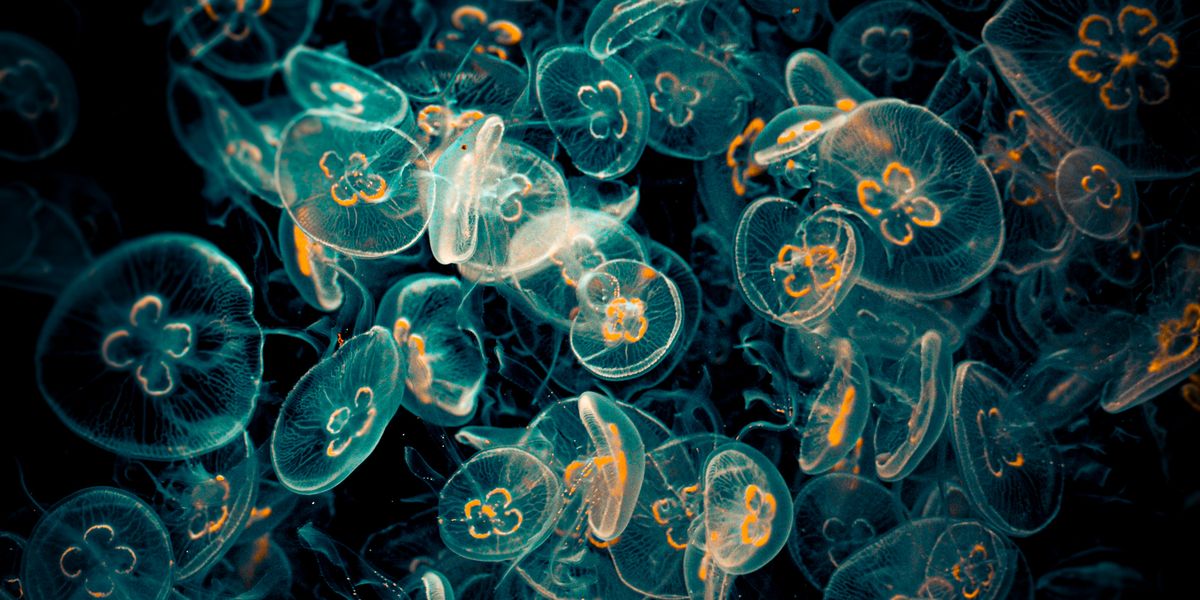Here’s what you’ll learn when you read this story:
A swarm of jellyfish shut down four of six nuclear reactors at the Gravelines power plant near Calais, France.The jellyfish found their way into the filter drums of the pumping station, causing a temporary shutdown over the weekend.Jellyfish swarms are increasing around the world as warmer oceans provide better spawning conditions and low-oxygen dead zones (caused largely by agricultural runoff) kill off aquatic competition.
Jellyfish are remarkable creatures. They’re twice as old as dinosaurs; they don’t have brains, lungs, or a heart; and they’ve nearly cracked the secret to immortality. But there’s another accolade that they can affix to their already impressive biological resumé—they’re the scourge of nuclear reactors.
This fact was proven this past Sunday, when three of the six reactors at Gravelines power plant near Calais in northern France shut down unexpectedly because a swarm of jellyfish had entered the plant’s cooling system, according to the government-owned utility operator Électricité de France, or EDF. By Monday morning, a fourth reactor also temporarily shut down.
Related Story
The jellyfish gathered near the filter drums of the pumping station that uses water from a nearby canal (which eventually feeds into the North Sea) to cool down the reactor. Although the shutdown was unexpected, the plant’s safety measures ensured that the jellyfish “had no impact on the safety of the facilities, the safety of personnel, or the environment,” the EDF said. Sadly, the jellyfish themselves didn’t fare as well.
When it comes to nuclear energy, France punches way above its weight. In response to the 1973 Oil Crisis, the country decided to double down on nuclear energy, and France now has 57 reactors in operation. Gravelines alone provides nearly 6 percent of the nation’s electricity—in fact, as of June of 2025, France has more generation capacity than China with around one-twentieth the population, and is second only to the U.S. in terms of net capacity.
Reactors along the coastline (like Gravelines) often use seawater to cool themselves because it’s particularly effective at removing waste heat. The EDF claims that filters prevent marine life from being sucked into these vents, but not from blocking the vents themselves. As The New York Times notes, jellyfish tend to “liquify” upon death, which can allow their bodies to bypass the filters and cause more problems downstream. The outlet also notes that in years past, similar jellyfish disruptions have impacted nuclear reactors around the world, including in Japan, Scotland, and Sweden.
Related Story
So, what’s causing all of this recent jellyfish mayhem? Yep, it’s climate change. Warmer ocean waters cause more favorable conditions for some jellyfish to spawn, and “dead zone” environments caused by the explosive growth of plankton (triggered by agricultural runoff) may impact some marine species, but not so much jellyfish. There, a lack of brain and blood becomes an evolutionary advantage.
The world has turned to some out-of-the-box solutions to address the global jellyfish crisis, most notably trying to make these meddlesome jellies a sought-after delicacy. But the real answers lie in reducing carbon dioxide emissions and limiting agricultural runoff that create these warmer, low-oxygen waters in the first place.
For more than 500 million years, jellyfish have served an important ecological function in the world’s oceans. If we really want to point a finger at who’s to blame, we should look in the mirror.
Darren lives in Portland, has a cat, and writes/edits about sci-fi and how our world works. You can find his previous stuff at Gizmodo and Paste if you look hard enough.
